At 6:30 a.m. this morning, April 30, a national parade took place in Ho Chi Minh City to celebrate the 50th anniversary of national reunification (April 30, 1975 - April 30, 2025).
This important event is jointly organized by the Central Committee of the Communist Party, the National Assembly, the President, the Government, the Central Committee of the Vietnam Fatherland Front and Ho Chi Minh City. Ho Chi Minh City plays the leading role in implementing and coordinating with the Ministry of National Defense, the Ministry of Public Security, the Ministry of Culture, Sports and Tourism and relevant agencies to carry out specific activities.
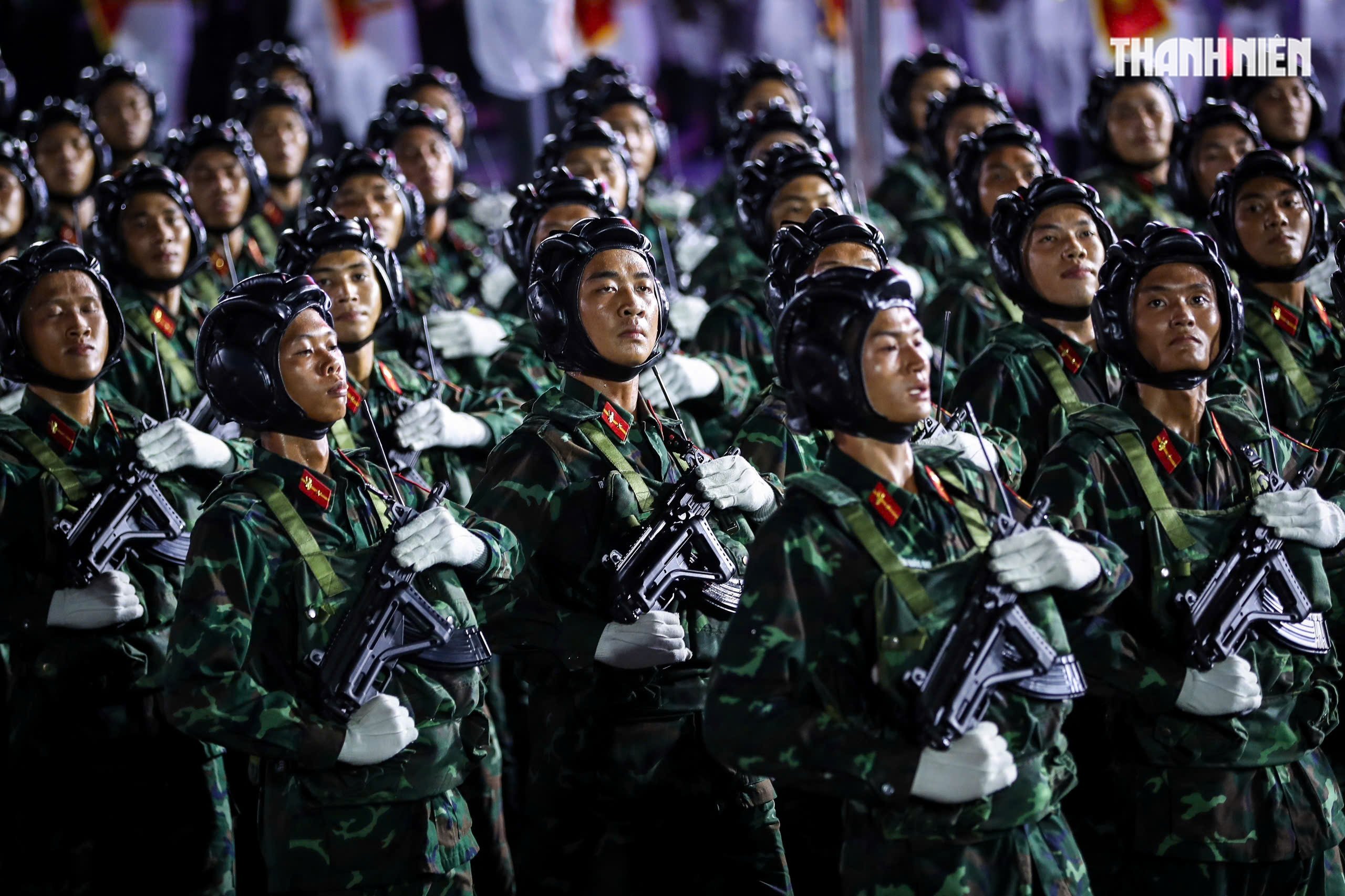
Tank and armored personnel carriers equipped with STV-215 submachine guns march in parade formation.
PHOTO: NHAT THINH
Since mid-April 2025, the participating forces have conducted many joint training sessions to perfect their formations and movements. The official joint training sessions took place on April 18 and April 22; the state-level preliminary rehearsal was held on April 25 and the full rehearsal was held on April 27.
This year's parade formation gathered many modern weapons and equipment, such as STV-215, STV-022, STV-380 submachine guns, bulletproof helmets integrated with electronic optical devices (including flashlights, night vision binoculars, thermal imaging cameras, etc.), communication equipment, K59 bulletproof helmets, K56 bulletproof armor produced by Factory Z117 (under the General Department of Defense Industry, Ministry of National Defense).
STV-215 gun at the April 30 parade
The STV-215 submachine gun is a carbine version of the STV (Vietnamese rifle) series, manufactured and designed by Factory Z111. This is one of the modern gun models researched and manufactured by Vietnam, based on the Galil ACE gun platform but adjusted to the tactical requirements and physical condition of Vietnamese soldiers.
The STV-215 uses 7.62×39 mm ammunition (shared with the AK). With a barrel length of 215 mm, a weight of about 3.7 kg and a rate of fire of 700 rounds/minute, the STV-215 is compact, mobile, suitable for urban combat and special missions.
The gun is also equipped with a Picatinny rail, allowing for the attachment of additional sights, flashlights..., with high stability and durability, suitable for conventional infantry combat.
During the parade celebrating the 50th anniversary of national reunification in Ho Chi Minh City, the STV-215 was equipped for tank and armored soldiers, female UN peacekeepers, cyber warfare forces, and airborne special forces soldiers.
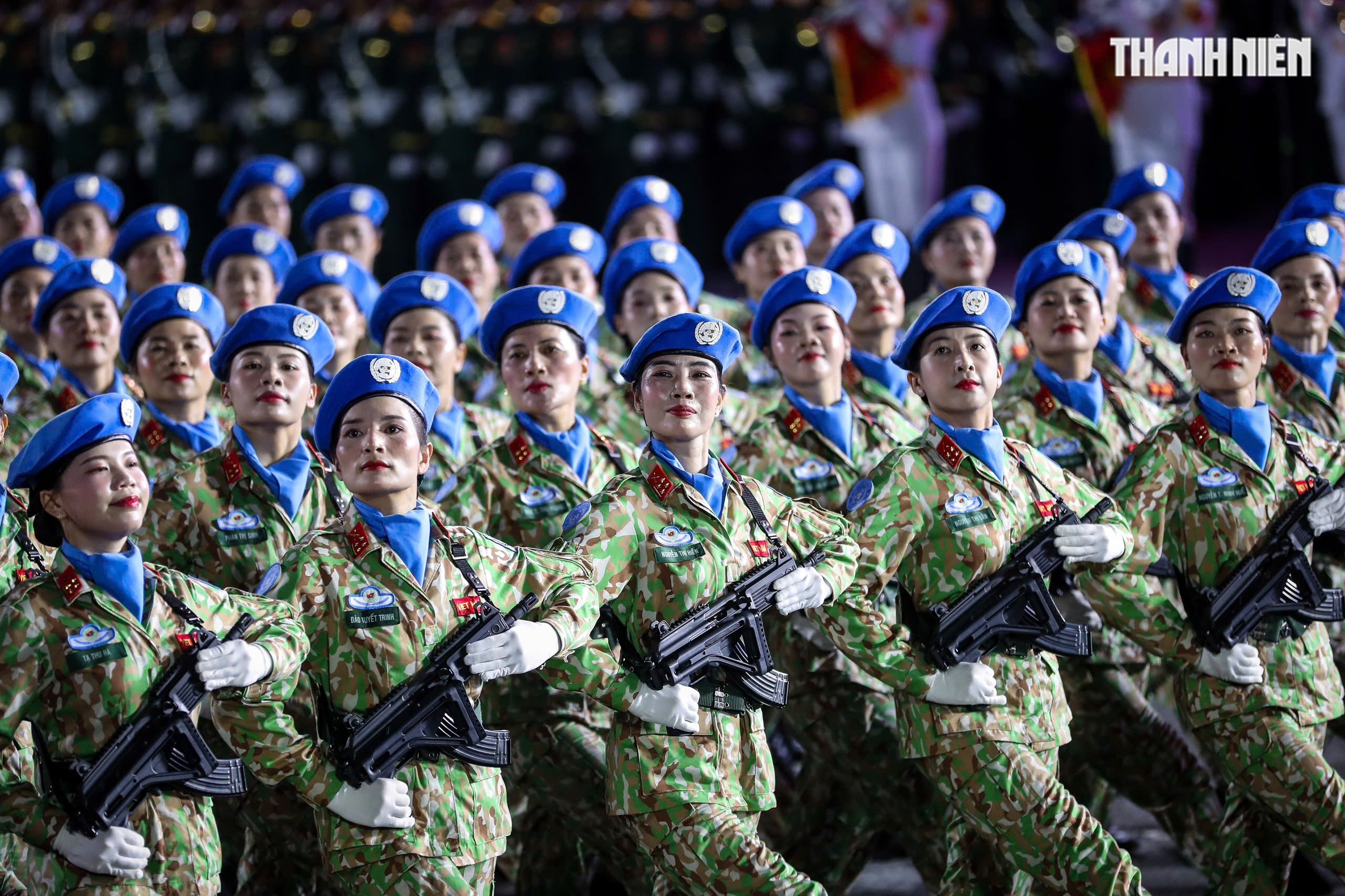
Female soldiers of the Vietnamese peacekeeping force, wearing the characteristic green beret, holding STV-215 submachine guns.
PHOTO: NHAT THINH
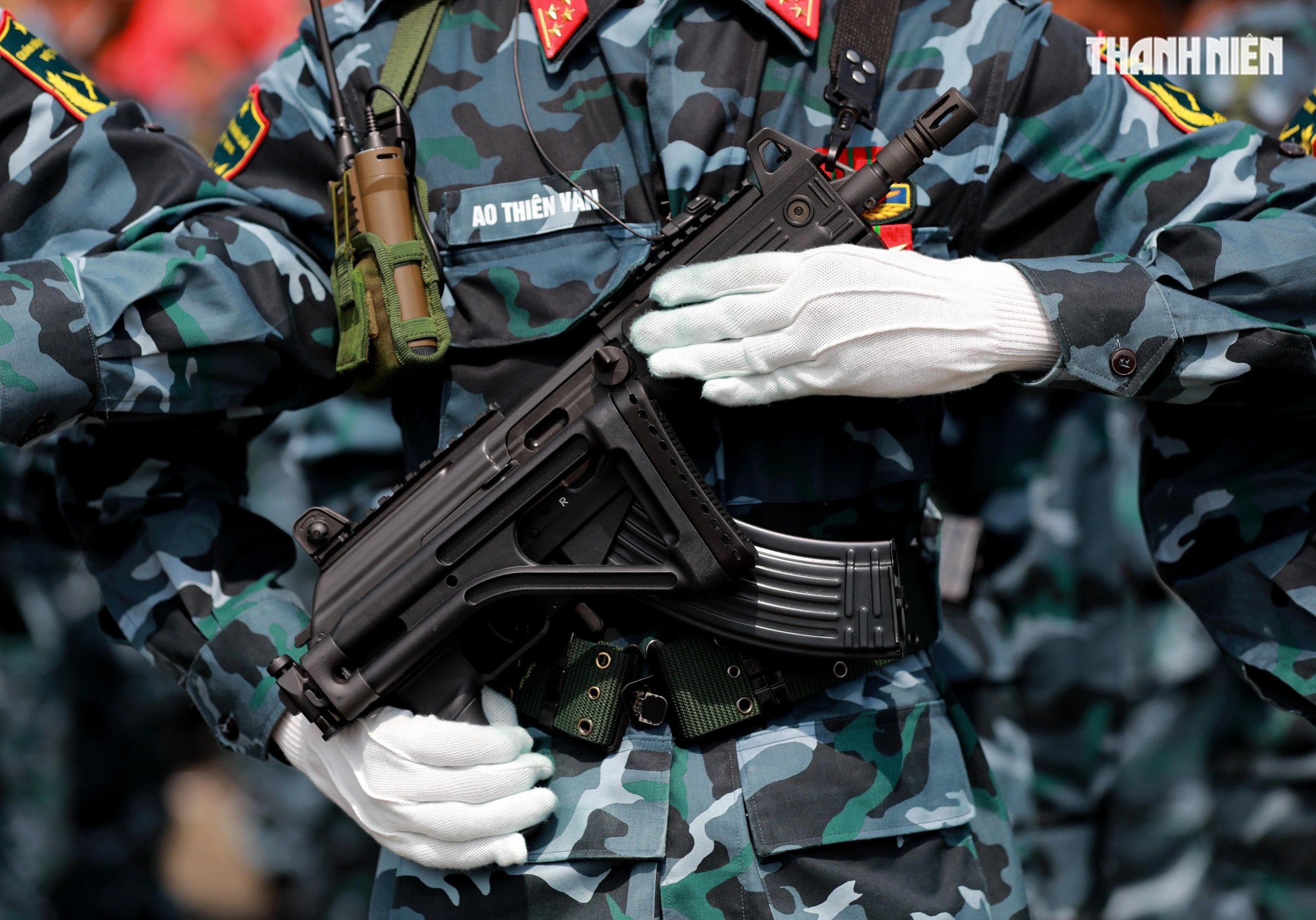
Cyber warfare soldiers equipped with STV-215 submachine guns
PHOTO: NGOC DUONG
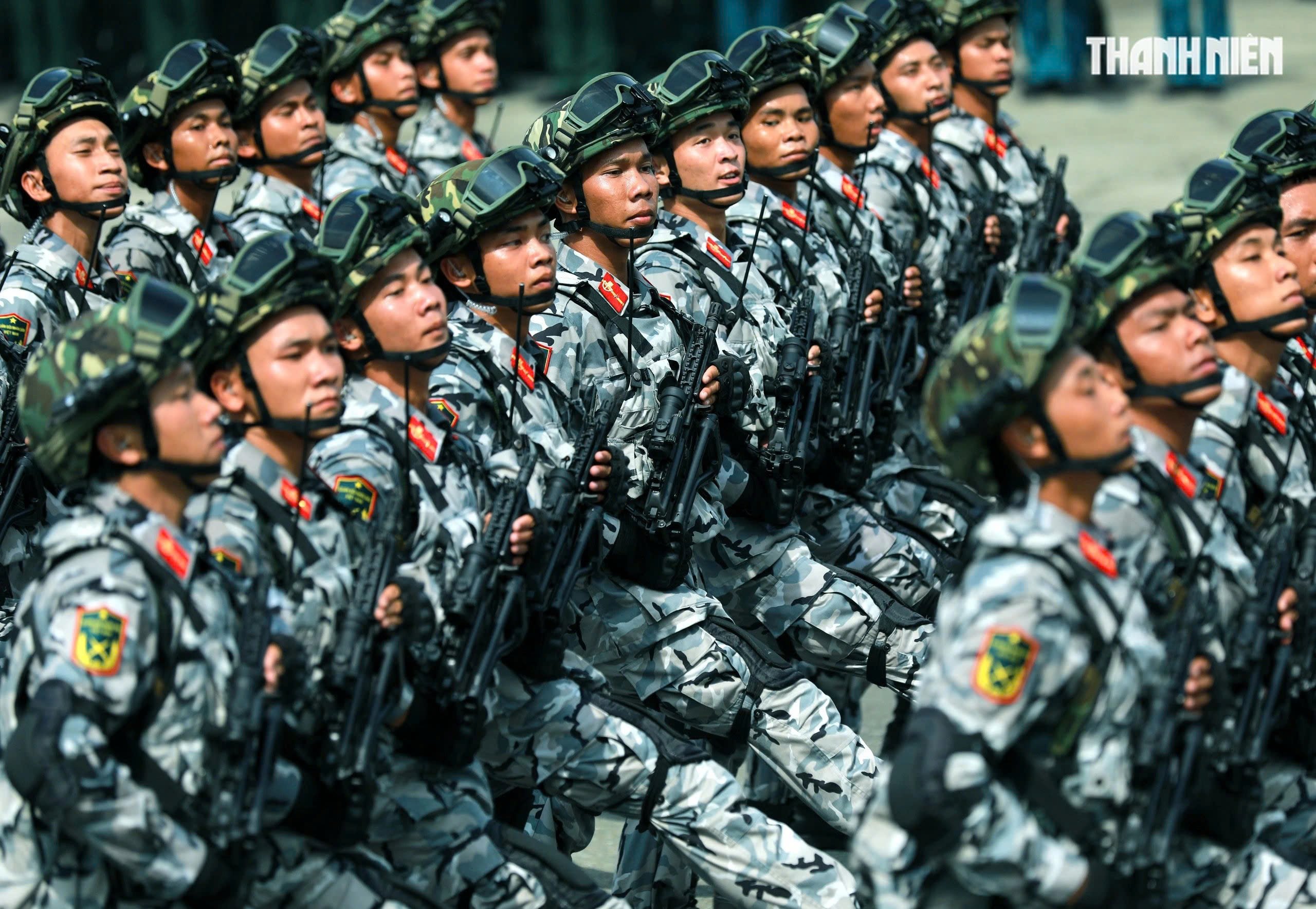
Special forces soldiers wearing tactical helmets (with flashlights and goggles), carrying STV-215 guns and wearing short-wave radio transmitters
PHOTO: NGOC DUONG
STV-022 Gun
The STV-022 submachine gun is the most compact variant in the STV gun line, designed and manufactured by Factory Z111.
Developed on the basis of the STV-215, the STV-022 has a shorter design, weighs about 2.8 kg, uses 7.62×39 mm ammunition and has an effective range of about 250 m. The gun is 470 mm long, has a theoretical rate of fire of 700 rounds/minute and a magazine capacity of 15 rounds.
This is a compact gun, equipped for special forces and guards. The gun is also equipped with a Picatinny rail for mounting additional equipment.
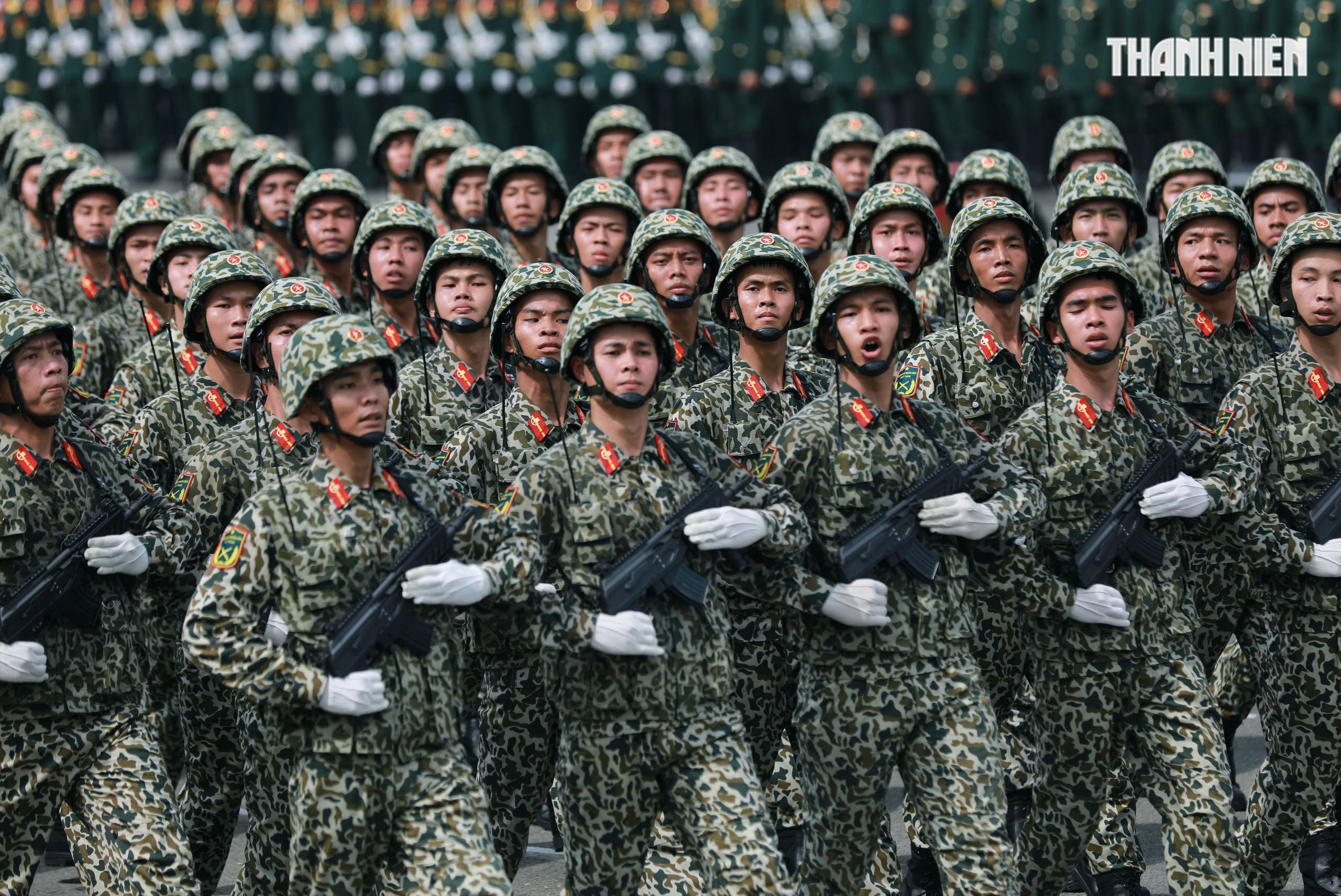
During the April 30 parade, special forces soldiers were equipped with STV-022.
PHOTO: NGOC DUONG
STV-380 Gun
The STV-380 is a model of gun designed and manufactured by Vietnam at Factory Z111. This is an improved version of the Israeli Galil ACE gun, adjusted to suit the combat conditions and physical condition of Vietnamese soldiers.
The STV-380 uses 7.62×39 mm ammunition, weighing about 3.6 kg (unloaded) and 4.1 kg (fully loaded).
The STV-380 has a balanced design, convenient for infantry to maneuver on many terrains. The gun barrel is 380 mm long, allowing for a muzzle velocity of 700 to 715 m/s, effectively attacking within a range of about 300 m.
The STV-380's rate of fire is about 700 - 950 rounds/minute, suitable for high-intensity combat requirements. The gun is also equipped with a standard Picatinny rail, allowing for the installation of additional sights, grenade launchers, tactical flashlights, etc.
In addition, the flexible folding stock makes it easy for the shooter to operate in narrow environments or when moving continuously. The gun is suitable for units that need longer range and higher accuracy such as mobile infantry or peacekeeping forces.
During the April 30 parade in Ho Chi Minh City, the groups equipped with STV-380 guns included army soldiers, male UN peacekeeping police officers, and electronic warfare soldiers.
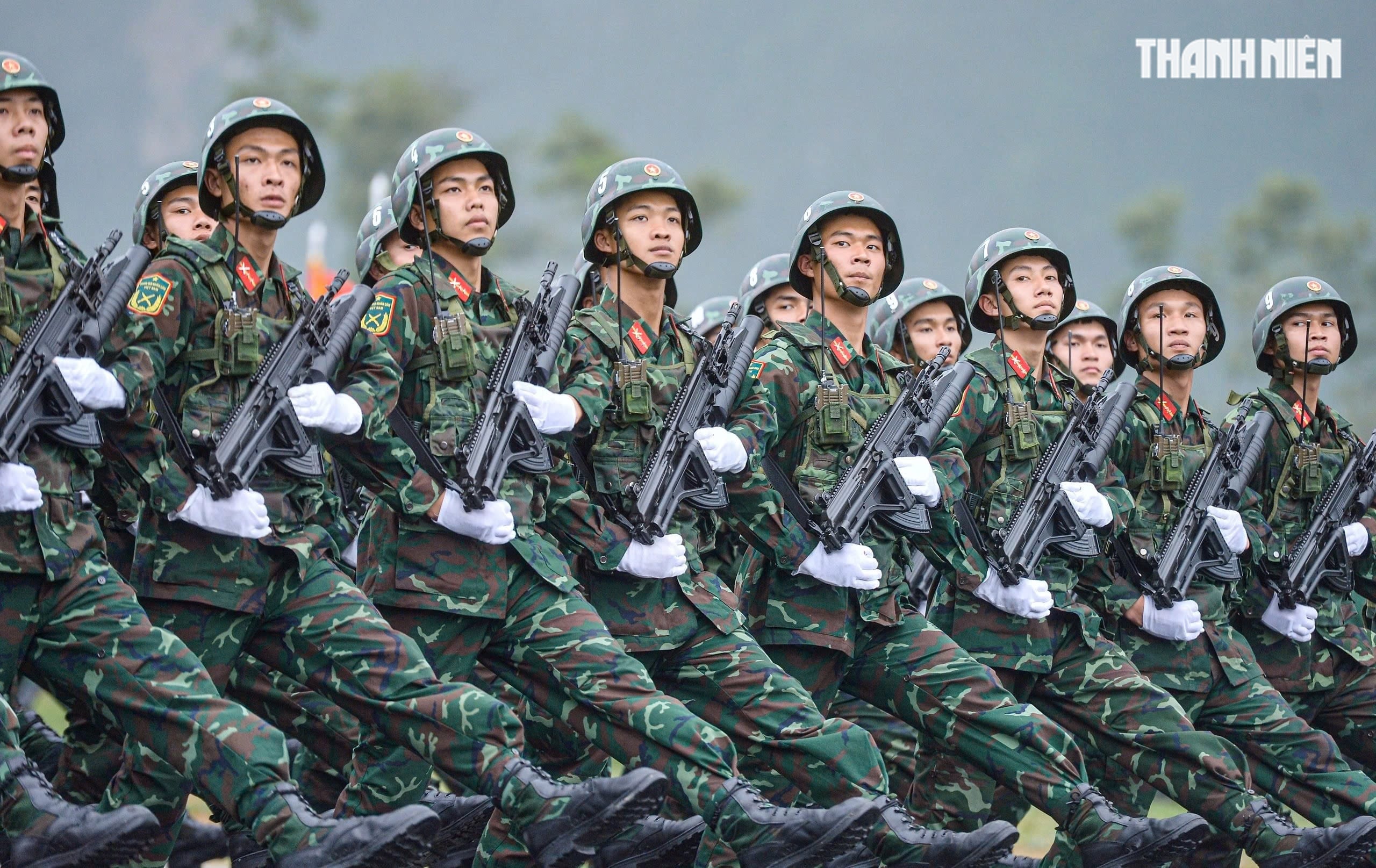
The infantry unit carries the STV-380 rifle with the OPL-40M under-barrel grenade launcher. This is a 40mm grenade launcher designed to be mounted under the barrel of rifles such as the STV-380, to increase the firepower of the infantry. The force is also equipped with some new equipment such as microwave radio transceivers, tactical helmets that can integrate modern equipment.
PHOTO: DINH HUY

Electronic warfare soldier block carrying STV-380 gun with OPL-40M grenade launcher
PHOTO: NGOC DUONG
MP5A3 rapid fire submachine gun
The MP5A3 submachine gun is a variant of the famous MP5 series, designed and developed by West German company Heckler & Koch (H&K) in the 1960s.
The MP5A3 uses 9x19 mm Parabellum ammunition, has a rate of fire of up to 800 rounds/minute, and an effective range of about 100 m.
The gun has a compact design, light weight and low recoil, suitable for combat missions in narrow spaces or urban areas.
The MP5A3 is also equipped with Picatinny rails for mounting accessories such as scopes, flashlights or lasers, enhancing combat capabilities in low light conditions or complex environments.
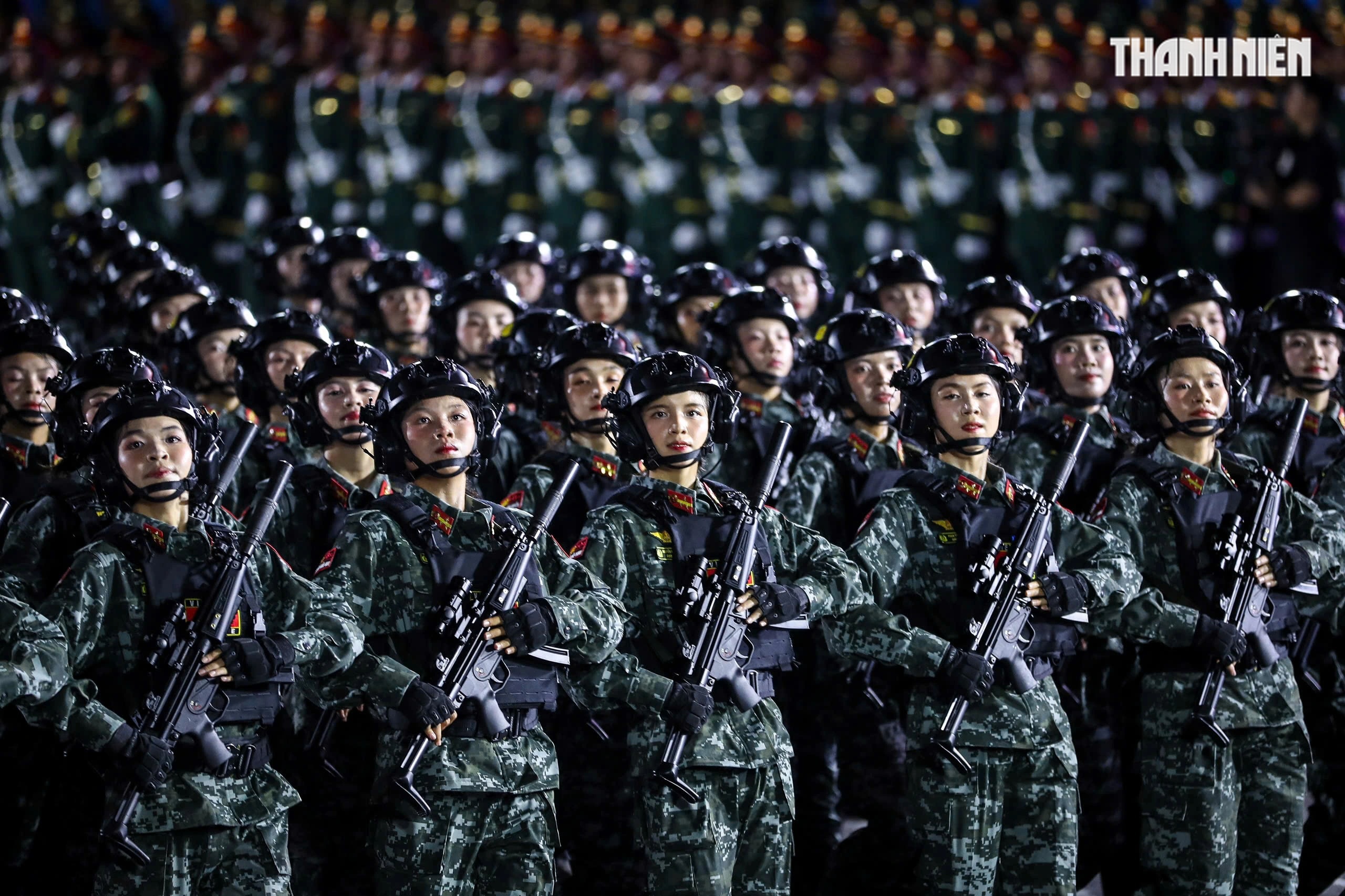
Female special police officer carrying MP5A3 rapid-fire submachine gun
PHOTO: NGOC DUONG
CKC Semi-Automatic Rifle
The CKC (short for "Симоновский Карабин Самозарядный" in Russian) or SKS (Simonov Self-loading Carbine) is a semi-automatic rifle designed by Soviet engineer Sergei Gavrilovich Simonov in the early 1940s.
The CKC uses 7.62x39mm bullets, the same type as the AK-47. In Vietnam, the CKC is one of the weapons associated with the image of soldiers during the anti-American resistance war, especially the militia and self-defense forces.
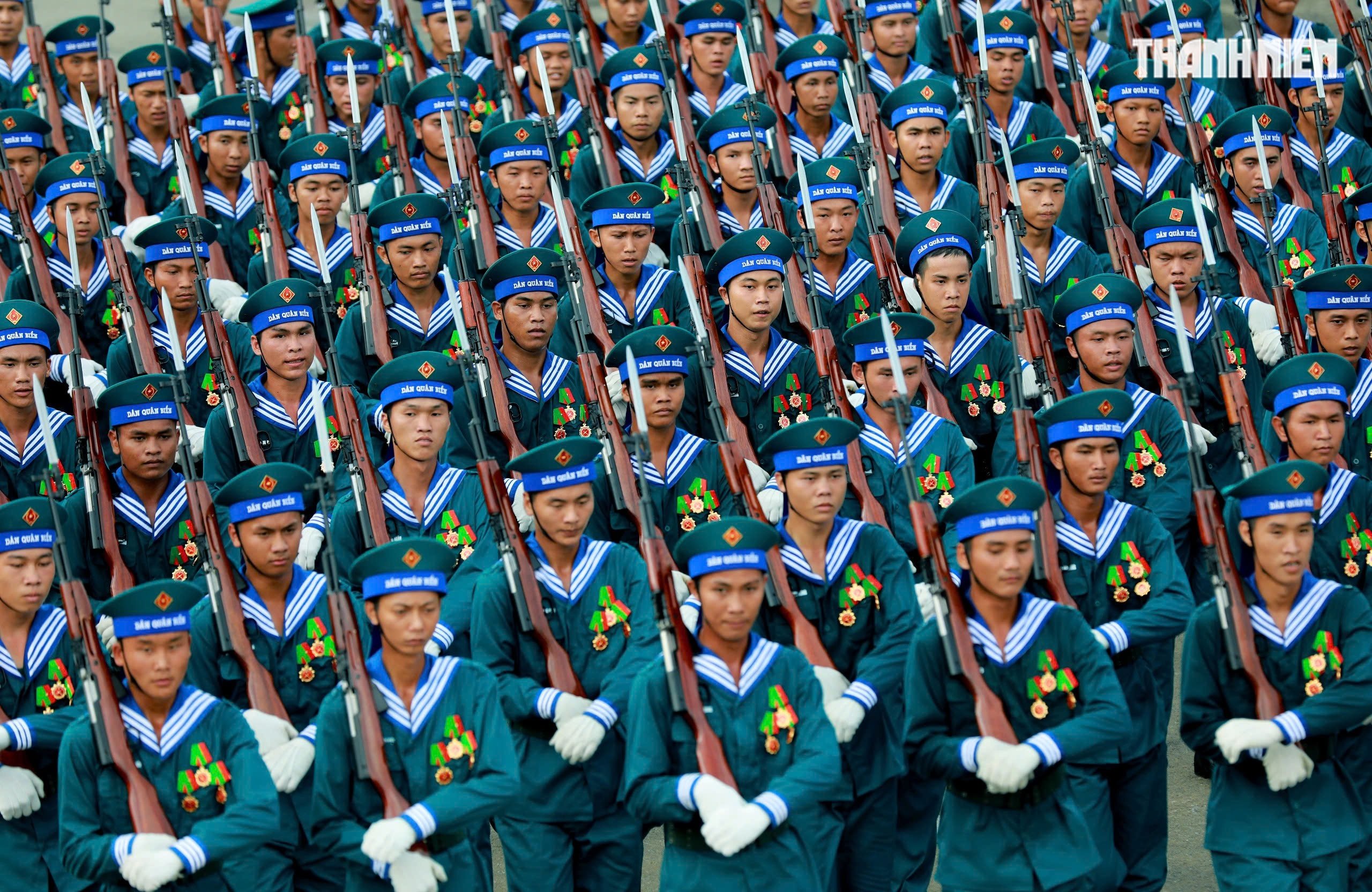
The men's maritime militia block carry CKC rifles. The rifles have a classic design, with a long, straight wooden stock and a fixed bayonet attached below the barrel.
PHOTO: NGOC DUONG
AR-15 Rifle
The AR-15 was developed by the American company ArmaLite in the late 1950s. The AR-15 was designed with a direct impingement gas mechanism, allowing for reduced weight and increased accuracy.
With its modular design, the AR-15 allows users to easily replace accessories such as grips, stocks and sights, suitable for many different usage situations.
During the resistance war against the US, the Southern guerrillas used AR-15 rifles, mainly versions such as the M16 and CAR-15, captured from the US army and the Army of the Republic of Vietnam.
After the country was reunified, our armed forces seized a large number of AR-15 rifles made in the US. However, this type of rifle uses 5.56 mm bullets, while the source of this ammunition in our country is very limited.
To make the most of it, we have modified the AR-15 into a gun that uses 7.62 mm bullets, the same size as the AK submachine gun. In early 1982, the Weapons Institute officially launched the project "Research and design to convert the AR-15 submachine gun into a medium machine gun that fires 7.62 mm bullets".
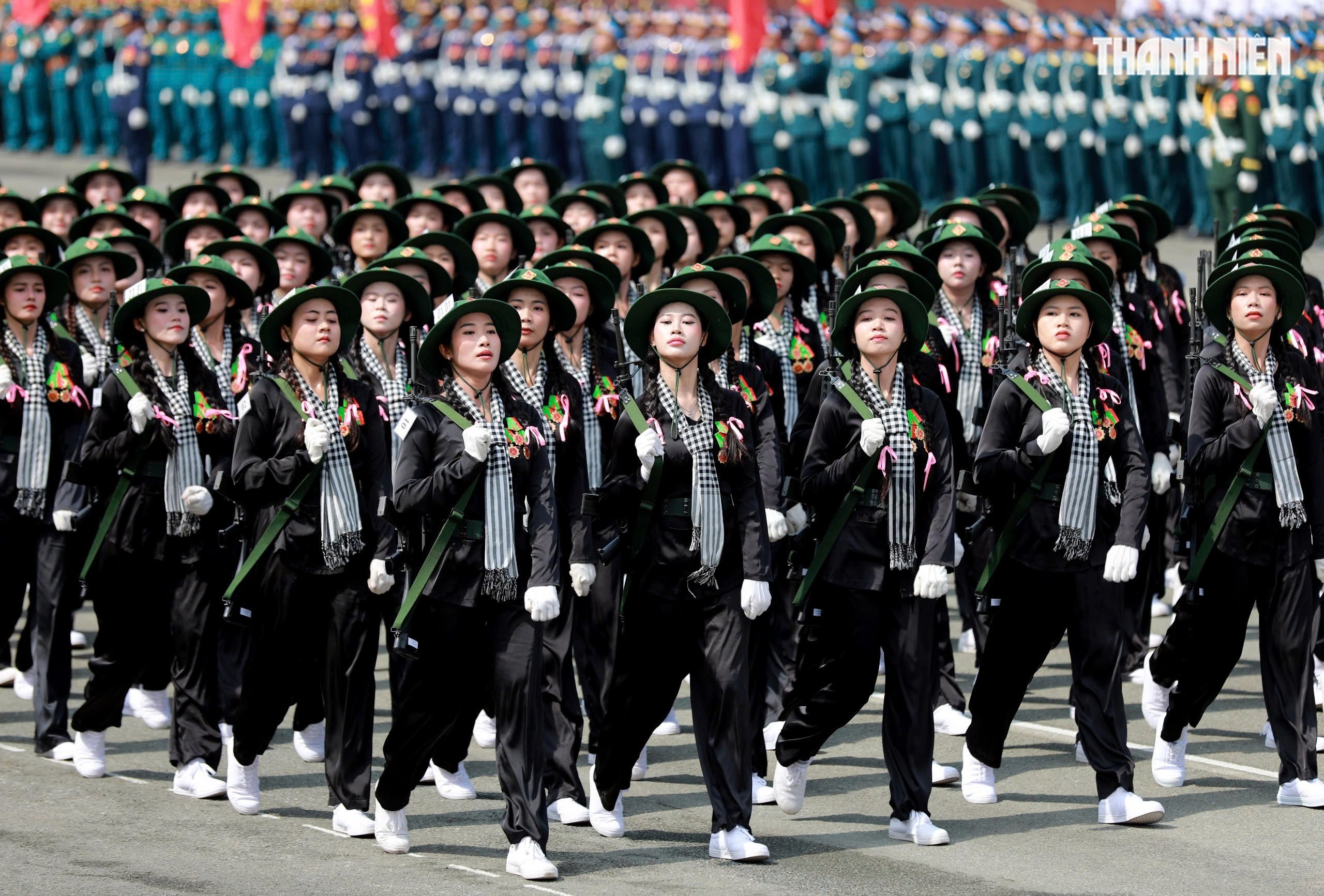
The Southern female guerrillas wore bucket hats, Southern scarves and carried AR-15 rifles.
PHOTO: NGOC DUONG
Other equipment
In addition, the parade blocks are also equipped with many modern weapons, such as VRH-811S radios and camouflaged 3-leaf antennas.
In particular, the radio is a tactical communication device researched and produced by Viettel High Tech. This device uses SDR (Software Defined Radio) technology, allowing flexible updates and upgrades of features via software. The radio's communication range is up to 8 km with a long antenna on flat terrain. The main communication function is to support secure analog and digital voice transmission, message transmission, text data and images.
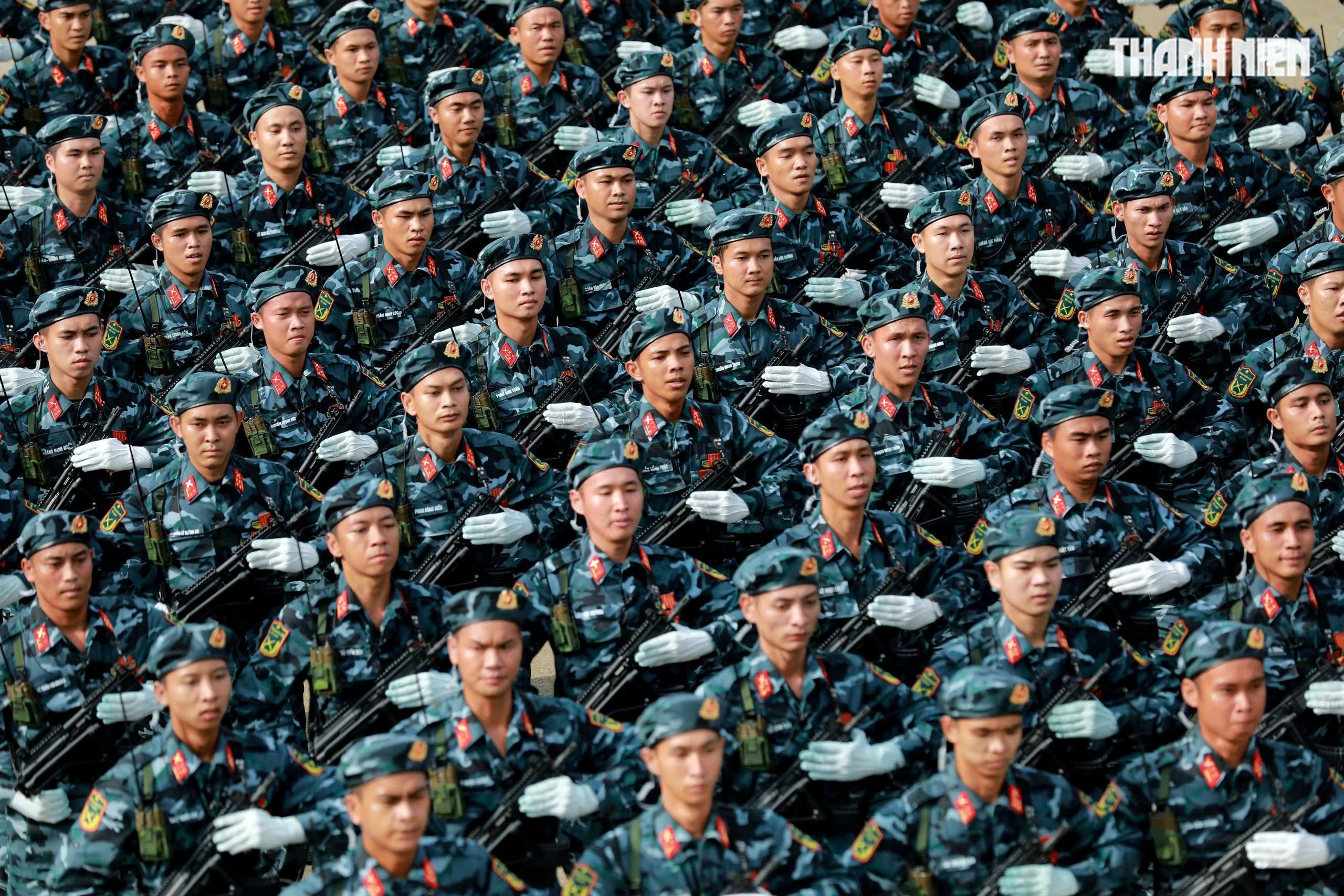
Cyberspace operations force wearing short-wave radio transceivers (manufactured by Viettel)
PHOTO: NGOC DUONG
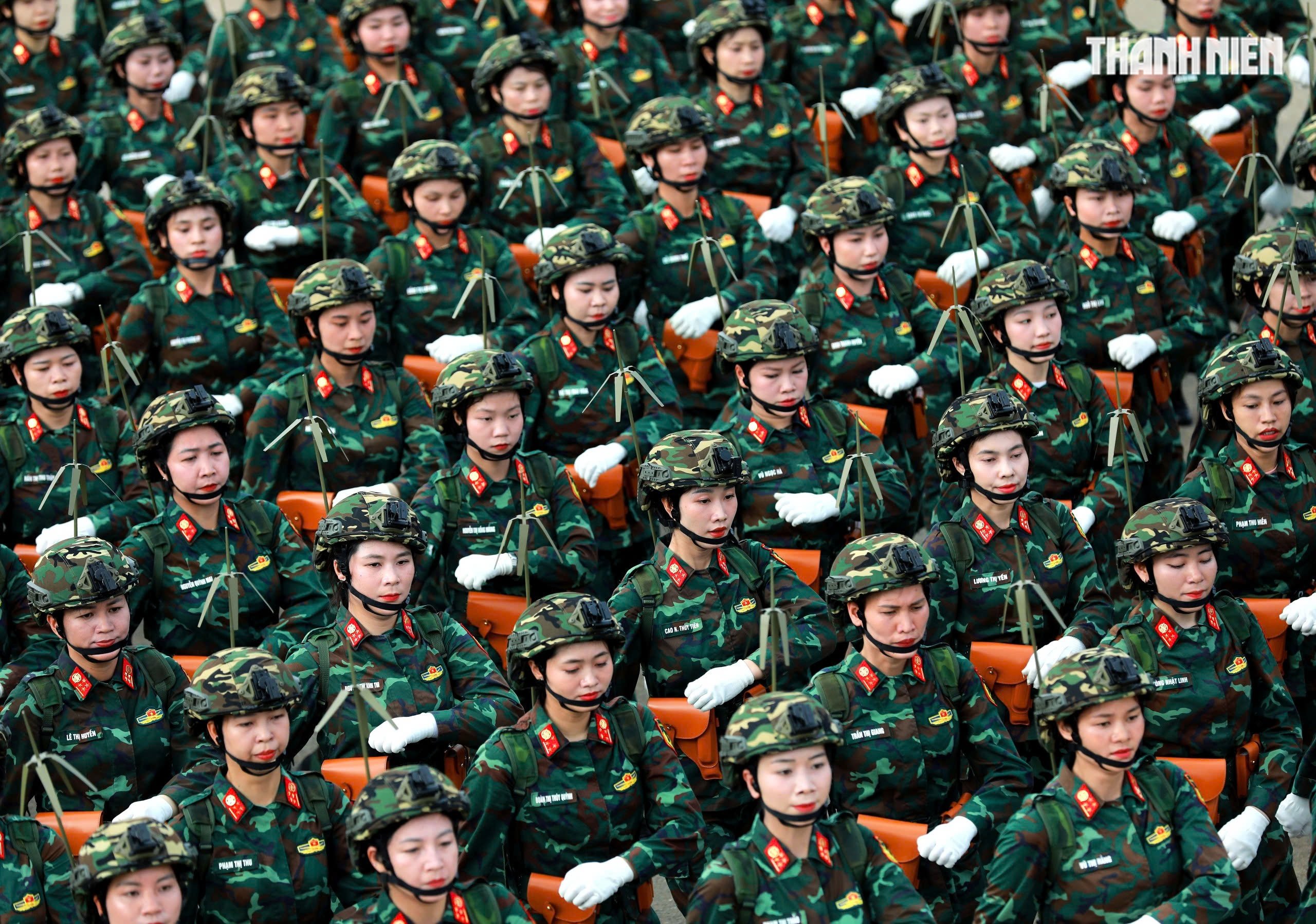
Female information officers wearing pistols, tactical helmets, and VRH-811S radios (manufactured by Viettel) with camouflaged 3-leaf antennas
PHOTO: NGOC DUONG
In addition, the artillery force deployed 18 105mm cannons, including 15 official cannons and 3 reserve cannons, placed at Bach Dang wharf park to fire salutes to celebrate the anniversary.
This year's parade also featured 23 fighter jets from the Air Defense - Air Force (Ministry of National Defense), including:
- 7 Su-30MK2 fighters. This is a modern multi-role fighter aircraft, performing aerobatic displays and dropping heat traps in the sky of Ho Chi Minh City.
- 6 Yak-130 training and combat aircraft.
- 10 military helicopters (Mi-171, Mi-17, Mi-8), flying in a 3-4-3 formation, flying the Party flag and the national flag, flew over the ceremony area and the center of Ho Chi Minh City.
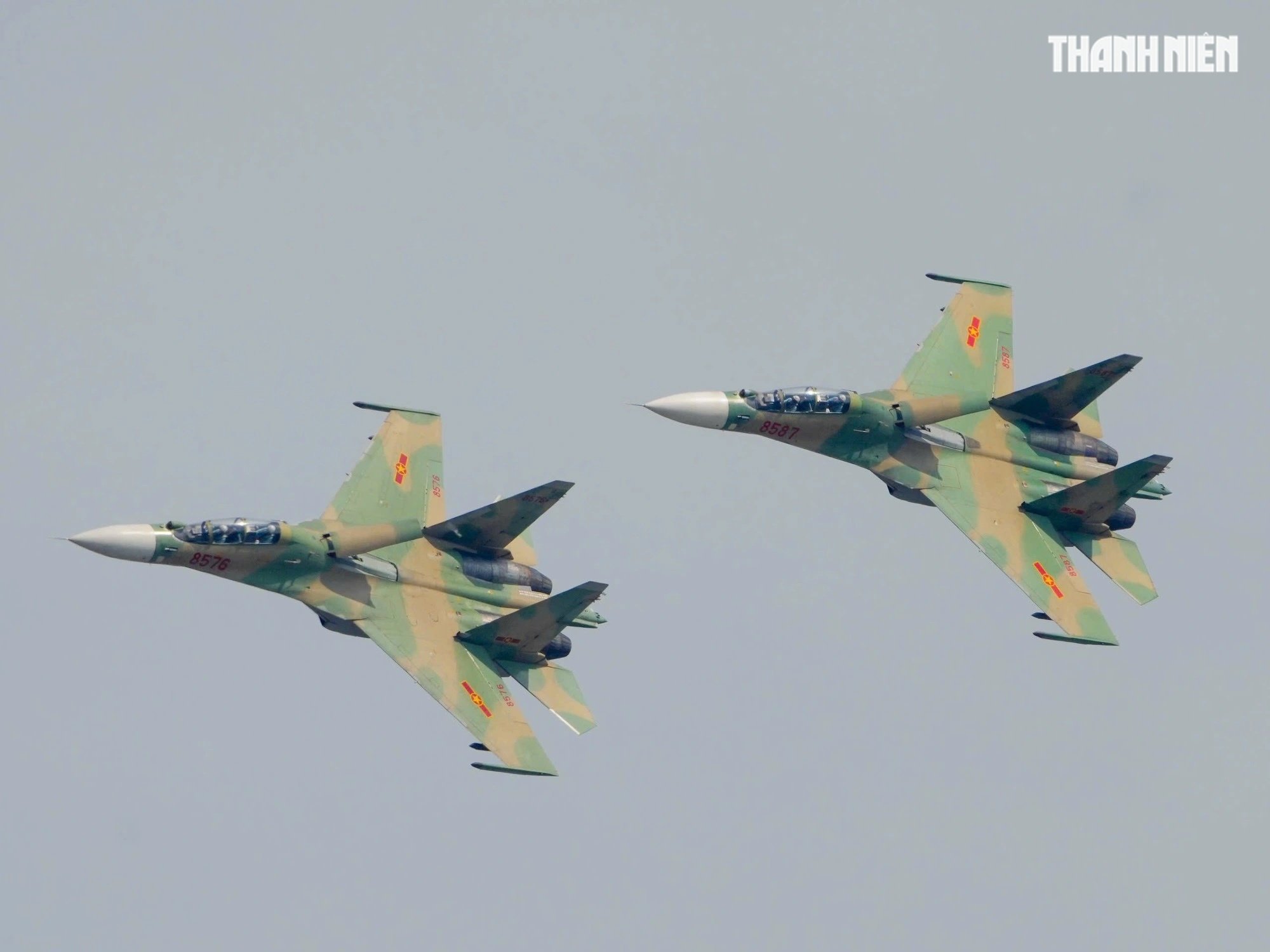
Su-30MK2 fighter jets fly over downtown Ho Chi Minh City on the morning of April 27, opening the state-level parade rehearsal.
PHOTO: INDEPENDENCE
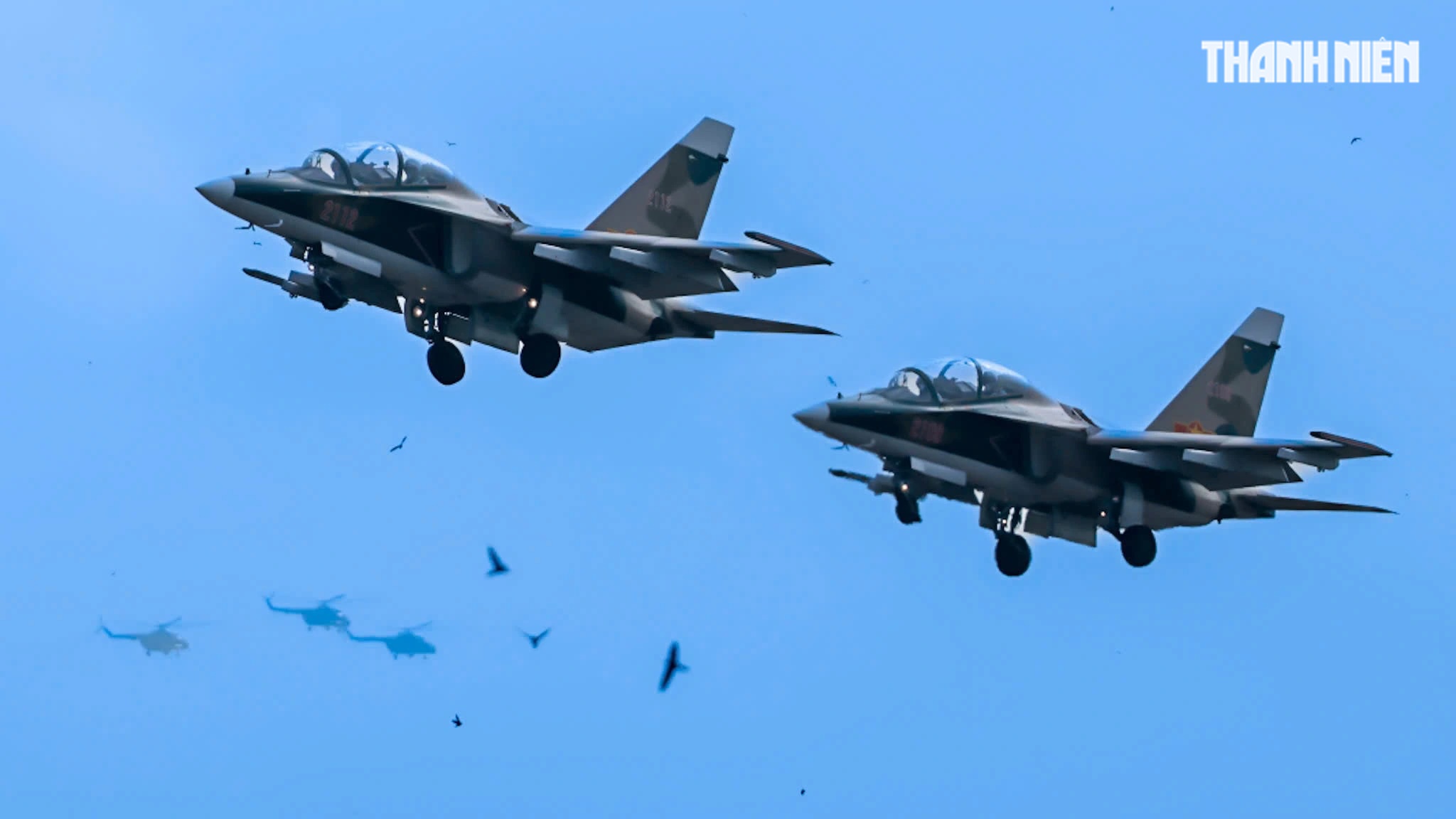
Yak-130 multi-role combat trainer aircraft takes off
PHOTO: MAI THANH HAI
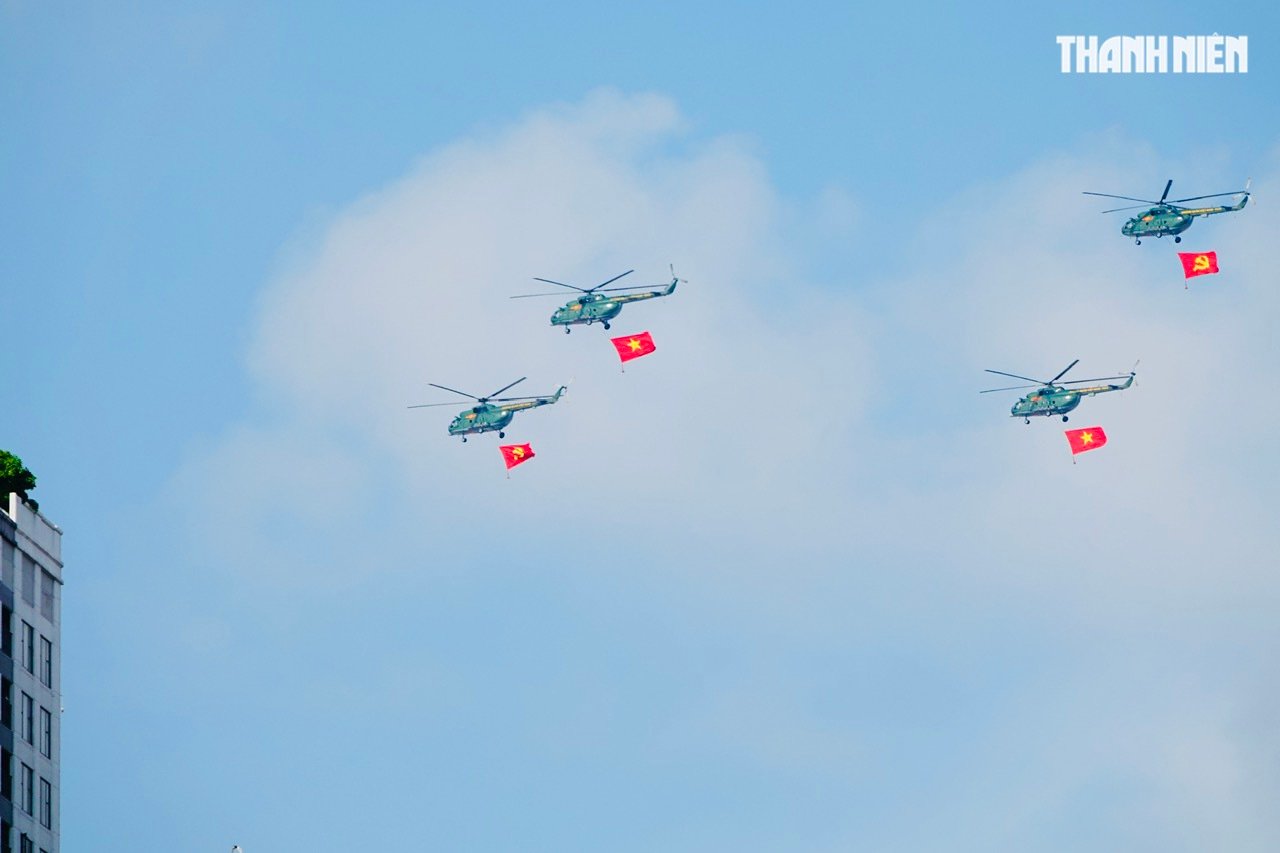
4/10 military helicopters (Mi-171, Mi-17, Mi-8)
PHOTO: MAI THANH HAI
Source: https://thanhnien.vn/vu-khi-va-khi-tai-toi-tan-tai-le-dieu-binh-304-o-tphcm-185250429153419344.htm



![[Photo] The parade took to the streets, walking among the arms of tens of thousands of people.](https://vphoto.vietnam.vn/thumb/1200x675/vietnam/resource/IMAGE/2025/4/30/180ec64521094c87bdb5a983ff1a30a4)

![[Photo] Chinese, Lao, and Cambodian troops participate in the parade to celebrate the 50th anniversary of the Liberation of the South and National Reunification Day](https://vphoto.vietnam.vn/thumb/1200x675/vietnam/resource/IMAGE/2025/4/30/30d2204b414549cfb5dc784544a72dee)

![[Photo] Cultural, sports and media bloc at the 50th Anniversary of Southern Liberation and National Reunification Day](https://vphoto.vietnam.vn/thumb/1200x675/vietnam/resource/IMAGE/2025/4/30/8a22f876e8d24890be2ae3d88c9b201c)


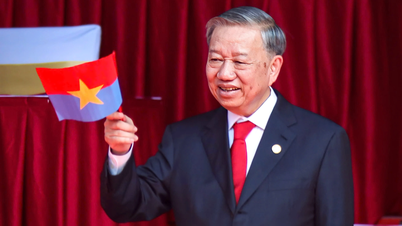
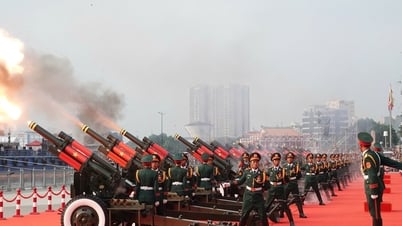
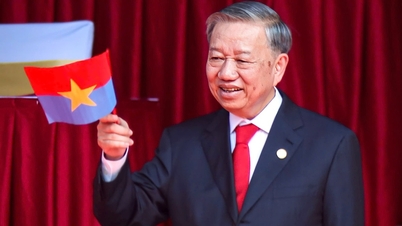











![[Photo] Performance of the Air Force Squadron at the 50th Anniversary of the Liberation of the South and National Reunification Day](https://vphoto.vietnam.vn/thumb/1200x675/vietnam/resource/IMAGE/2025/4/30/cb781ed625fc4774bb82982d31bead1e)















































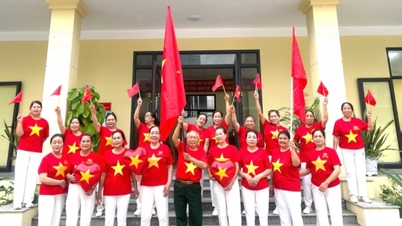

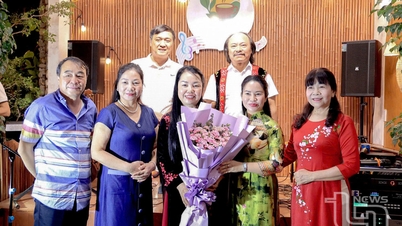





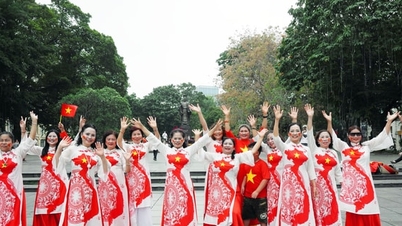












Comment (0)